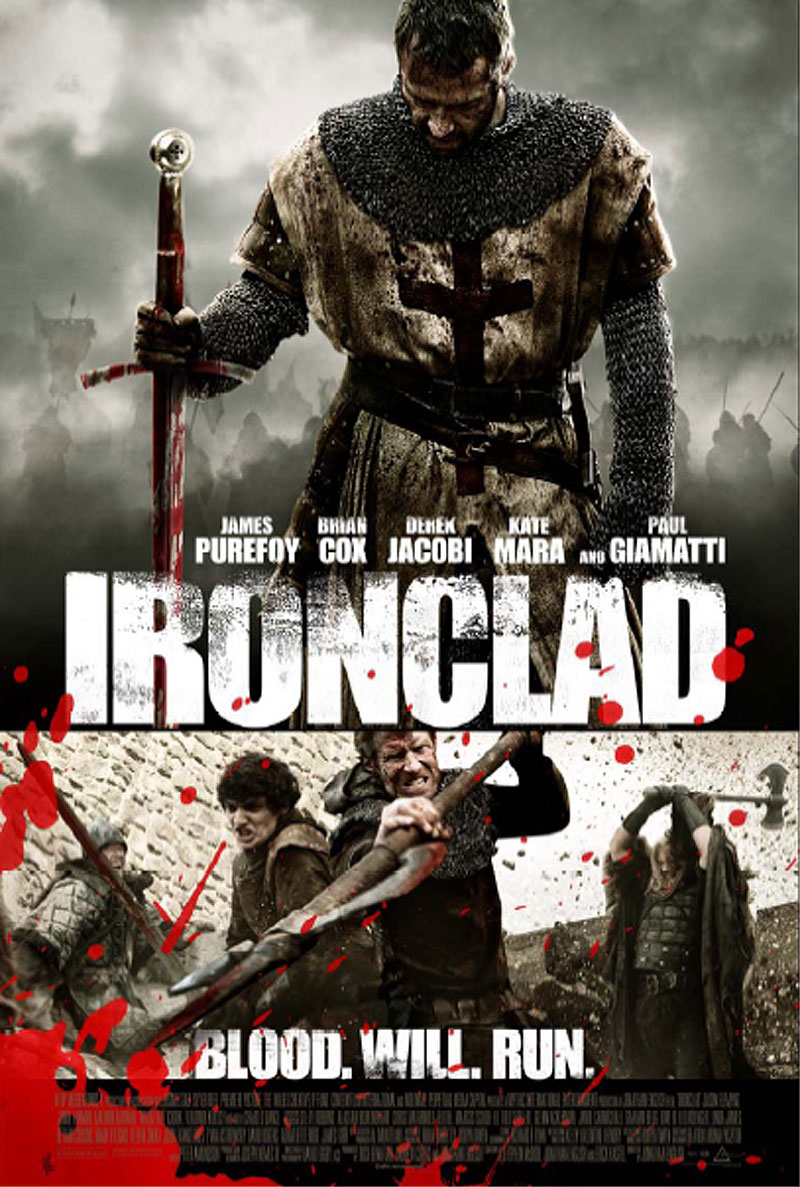Ironclad Film: A Deep Dive Into Historical Action Cinema
Ironclad film is more than just a portrayal of historical events; it is a vivid depiction of a pivotal moment in history that combines action, drama, and a deep sense of loyalty and courage. Set in the 13th century, this film immerses viewers in the struggles faced by the Knights Templar and their fight against tyranny. In this article, we will explore the intricacies of the film, its historical background, character development, and its impact on the genre of historical action cinema.
The film "Ironclad," released in 2011, has captured the attention of audiences due to its gripping storyline and intense battle sequences. As we delve deeper into its themes and narratives, we will also examine the filmmaking techniques that contribute to its authenticity and emotional depth. Whether you're a history buff, a fan of action films, or someone looking for a captivating story, "Ironclad" offers something for everyone.
In the following sections, we will break down the film's biographical elements, its production details, and the significance it holds in the realm of cinema. We will also discuss how the filmmakers managed to blend fact with fiction, creating a compelling narrative that resonates with viewers today.
Table of Contents
- 1. Biography of Ironclad
- 2. Plot Overview
- 3. Character Development
- 4. Historical Context
- 5. Production Details
- 6. Critical Reception
- 7. Impact on Action Cinema
- 8. Conclusion
1. Biography of Ironclad
"Ironclad" is a historical action film directed by Jonathan English, featuring a talented cast including Paul Giamatti, James Purefoy, and Brian Cox. The film focuses on the siege of Rochester Castle in 1215, during the First Barons' War, where a group of Knights Templar and Barons defend the castle against King John of England's forces.
Below is a table summarizing key details about the film:
| Category | Details |
|---|---|
| Title | Ironclad |
| Director | Jonathan English |
| Release Year | 2011 |
| Genre | Historical Action |
| Cast | Paul Giamatti, James Purefoy, Brian Cox |
2. Plot Overview
The plot of "Ironclad" revolves around the siege of Rochester Castle, where a small group of knights and barons take a stand against King John. As tensions rise, the knights face overwhelming odds, and the film portrays their struggle for freedom and justice in a tyrannical world. The narrative is rich with themes of loyalty, betrayal, and the harsh realities of medieval warfare.
Key Plot Points
- The rebellion against King John's oppressive rule.
- The defense of Rochester Castle as a symbol of resistance.
- The personal sacrifices made by the characters in their fight for freedom.
3. Character Development
Character development in "Ironclad" is one of its strong suits. Each character is fleshed out with their motivations, fears, and desires. The film does not just focus on the action but also delves into the personal struggles of the knights involved.
Main Characters
- **Thomas Marshall (James Purefoy)**: A noble knight torn between duty and morality.
- **King John (Paul Giamatti)**: The tyrannical king whose oppressive reign ignites the rebellion.
- **Baron de Vere (Brian Cox)**: A seasoned leader rallying the knights to defend the castle.
4. Historical Context
Understanding the historical context of "Ironclad" enriches the viewing experience. The film is set against the backdrop of the First Barons' War, a struggle between King John and a group of rebellious barons who sought to limit the king's power.
Key historical events depicted include:
- The signing of the Magna Carta in 1215, which limited the king's power.
- The siege warfare tactics employed during the medieval period.
- The role of the Knights Templar in protecting the Christian faith and their influence during the Crusades.
5. Production Details
The production of "Ironclad" involved meticulous attention to historical detail. Filming took place in various locations in the UK, and the creators aimed to create an authentic medieval atmosphere.
Some notable production aspects include:
- Use of practical effects for battle scenes.
- Collaboration with historians to ensure accuracy in costumes and weaponry.
- Filming techniques that enhance the raw realism of the battles.
6. Critical Reception
Critics' Opinions
- Some critics highlighted the film's strong performances, particularly Paul Giamatti's portrayal of King John.
- Others noted the film's reliance on action over character development, which may alienate some viewers.
7. Impact on Action Cinema
"Ironclad" is often discussed in the context of the resurgence of historical action films in the early 2010s. It paved the way for other films that blend historical narratives with intense action sequences.
Key contributions to the genre include:
- Revitalizing interest in medieval settings in film.
- Inspiring a new wave of filmmakers to explore historical narratives with a modern approach.
8. Conclusion
In conclusion, the "Ironclad film" stands as a testament to the power of action cinema rooted in historical contexts. Its blend of intense action, character development, and historical accuracy creates a compelling narrative that resonates with viewers. As you explore the depths of this film, consider how it reflects the timeless struggle for freedom and justice throughout history.
If you enjoyed this exploration of "Ironclad," we encourage you to leave a comment, share this article with fellow film enthusiasts, and check out our other articles on historical films and their impact on cinema.
Thank you for visiting our site, and we hope to see you back for more engaging content!
Varner Survivor: The Journey Of A Reality TV Icon
T-Mobile Hulu: The Ultimate Guide To Streaming Services And Mobile Plans
Everything You Need To Know About 49er Jerseys: A Comprehensive Guide


